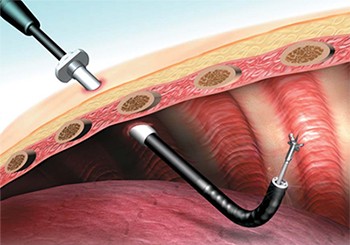‘Occupational risk factors’ is a term used to describe the harmful effects of breathing in various particles, gases, fumes or smoke in the workplace. These different factors are often referred to as ‘agents’.
Workplace guidelines exist in the European Union to ensure that there are limits on known harmful agents. These are decided by the European Commission’s Scientific Committee on Occupational Exposure Limit Values (SCOEL). Ensuring safe levels of a number of dangerous agents is an on-going ...
More
Author: chestsleep admin
Indoor Air Pollution
Indoor air pollution is the term used to describe exposure to certain substances found in homes, schools, transport and subway stations. Over 900 different compounds have been detected in indoor air and some pollutants may be 2-5 times more concentrated inside rather than outside buildings.
Air pollution can also be found within the workplace, but this is usually studied separately by experts and referred to as ‘work-related or occupational’ health hazards.
Indoor air pollution can be gener...
More
Genetic Susceptibility
Some people may have an increased likelihood of developing a lung disease because of the genes they inherited from their parents.
Genes are short sections of DNA that determine the characteristics of each living organism. Although the DNA sequence is more than 99% identical between different people, there is still scope for more than 10 million potential differences between the gene structure of two people.
Experts use the term genetic susceptibility to refer to genetic factors that may make ...
More
Early Life Risk Factors
There are a number of factors that can occur early in a person’s life that could lead to lung problems later in life. These include not breast feeding, weight gain, a mother’s use of paracetomol during pregnancy, complications during childbirth and indoor and outdoor air quality.
Pre-birth problems with lung development
The lungs may not always grow properly while a baby is in the womb. If the lungs do not grow properly, the baby has a low chance of survival once born. Abnormal lung growth ...
More
Diet & Nutrition
Most respiratory conditions are caused by an interaction between genetic and environmental factors such as smoking, pollution and diet. There is increasing evidence that diet and nutrition play a role in the development and progress of lung diseases.
Being either obese or underweight can both have harmful consequences for lung health.
How does diet affect different conditions?
Asthma
Different foods and nutrients can have an impact on the development and progression of asthma. The effe...
More
Pulmonary Tuberculosis
Pulmonary tuberculosis (TB) is a contagious bacterial infection that involves the lungs. It may spread to other organs.
Causes
Pulmonary tuberculosis (TB) is caused by the bacterium Mycobacterium tuberculosis (M. tuberculosis). TB is contagious. This means the bacteria is easily spread from an infected person to someone else. You can get TB by breathing in air droplets from a cough or sneeze of an infected person. The resulting lung infection is called primary TB.
Most people recover from p...
More
Multidrug-Resistant Tuberculosis
What is tuberculosis (TB)?
Tuberculosis (TB) is a disease caused by bacteria that are spread from person to person through the air. TB usually affects the lungs, but it can also affect other parts of the body, such as the brain, the kidneys, or the spine. In most cases, TB is treatable and curable; however, persons with TB can die if they do not get proper treatment.
What is multidrug-resistant tuberculosis (MDR TB)?
Multidrug-resistant TB (MDR TB) is caused by an organism that is resistant t...
More
Lung Cancer
Lung cancer is cancer that starts in the lungs. The lungs are located in the chest. When you breathe, air goes through your nose, down your windpipe (trachea), and into the lungs, where it flows through tubes called bronchi. Most lung cancer begins in the cells that line these tubes.
There are two main types of lung cancer :
Non-small cell lung cancer (NSCLC) is the most common type of lung cancer.
Small cell lung cancer (SCLC) makes up about 20% of all lung cancer cases.
If the lung cance...
More
Interstitial Lung Disease
Introduction
There are more than 300 different conditions that are classed as interstitial lung diseases. Most are very rare; but the more common interstitial lung diseases include:
Idiopathic Pulmonary Fibrosis.
Sarcoidosis.
Non-Specific Interstitial Pneumonia .
Extrinsic allergic alveolitis (also known as hypersensitivity pneumonitis).
Interstitial lung disease associated with connective tissue disease.
Pneumoconiosis.
Interstitial lung disease caused by certain drugs used to t...
More
Sleep Apnea
Introduction
Sleep apnea is a disorder that affects more than 18 million Indians. The word apnea means pauses in breathing; people who have sleep apnea literally stop breathing for short periods of time while sleeping. The pauses in breath usually last only a few seconds, but a person with sleep apnea may stop breathing many times in an hour, and hundreds of times over the course of a night. Most people with sleep apnea are unaware of their condition.
There are two kinds of sleep apnea: obstru...
More




